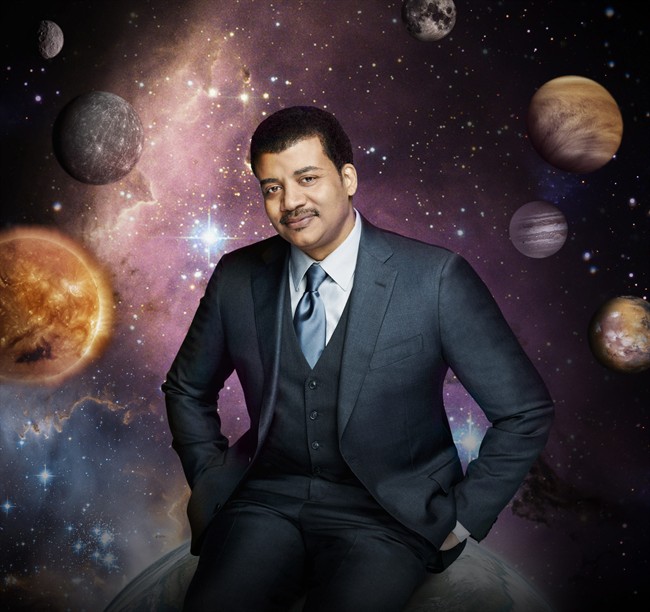TORONTO – If you were around in the 1970s, you’ll likely remember the PBS special Cosmos, hosted by renowned astronomer Carl Sagan. For many people, that show was responsible for introducing them to our universe. It was wildly successful, reaching an estimated 700 million people.

In the show, Sagan explored not just astronomy, but the very essence of life, from the infinitesimally small, to the uncomprehendingly large. More than 30 years passed and rumours swirled about the possibility of reintroducing the series to a whole new generation.
But in our day and age — a time of instant gratification and shortened attention spans — how do you wow the audience in a 13-part show about the universe?
You put it on network television — in this case, Fox (Global in Canada) — and put funny-man and Family Guy creator Seth MacFarlane at the helm.
READ MORE: Seth MacFarlane Discusses The ‘Cosmos’
You create a “Worldwide Premiere Event” airing it on National Geographic and National Geographic Wild at the same time.

Get breaking National news
You use state-of-the-art graphics depicting the Big Bang, collisions of worlds, and a sleek “spaceship of the mind” to take you on your journey.
You also include comic book-like animation to tell historical stories that might otherwise be lost in bland dialogue.
And you bring in world renowned astrophysicist Neil deGrasse Tyson to host it.
In the 1970s, there were specials like Wild Kingdom, National Geographic Explorer and PBS specials like Cosmos. Science shows actually had science programming. But with the addition of hundreds of channels all vying for our attention, so-called specialty channels that promised science content had to reinvent themselves.
In order for science to be appealing these days, it has to be sleek and sexy. National Geographic is now “Nat Geo,” a cable channel with a cool nickname. Shiny graphics, maps, and exciting footage are all used together with narration to provide a more immersive experience. And this is what the new Cosmos is doing.
Tyson is a logical choice for taking over where Sagan left off: his enthusiasm and love of astronomy and science is clear. He has mass appeal. And Sagan was a huge influence on Tyson, the two having met while Tyson was a teenager. Tyson has often said that he wants to follow in Sagan’s footsteps.
The question is whether or not — in the age of the Internet — that this kind of show will have legs. Can science television still capture the attention of millions of viewers when they can look at images from Hubble or a Mars rover while sitting at their desks?
But it’s not just about seeing pretty images. It’s about trying to understand what you’re looking at. It’s about putting things into perspective. It’s about learning.
It’s time real science was brought back into our homes.
Cosmos airs on Global Television Sundays at 9 p.m.









Comments